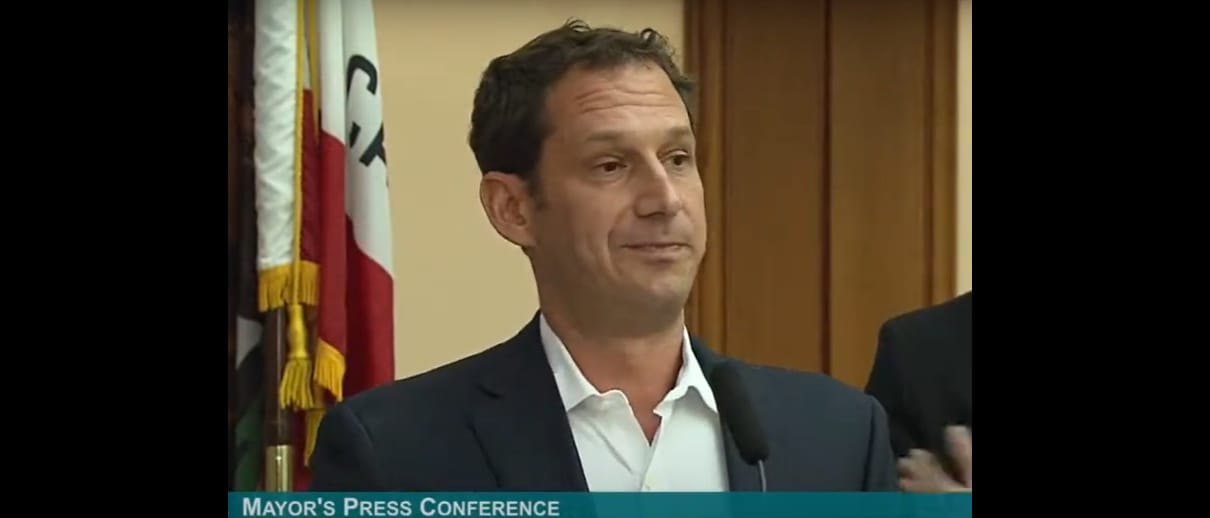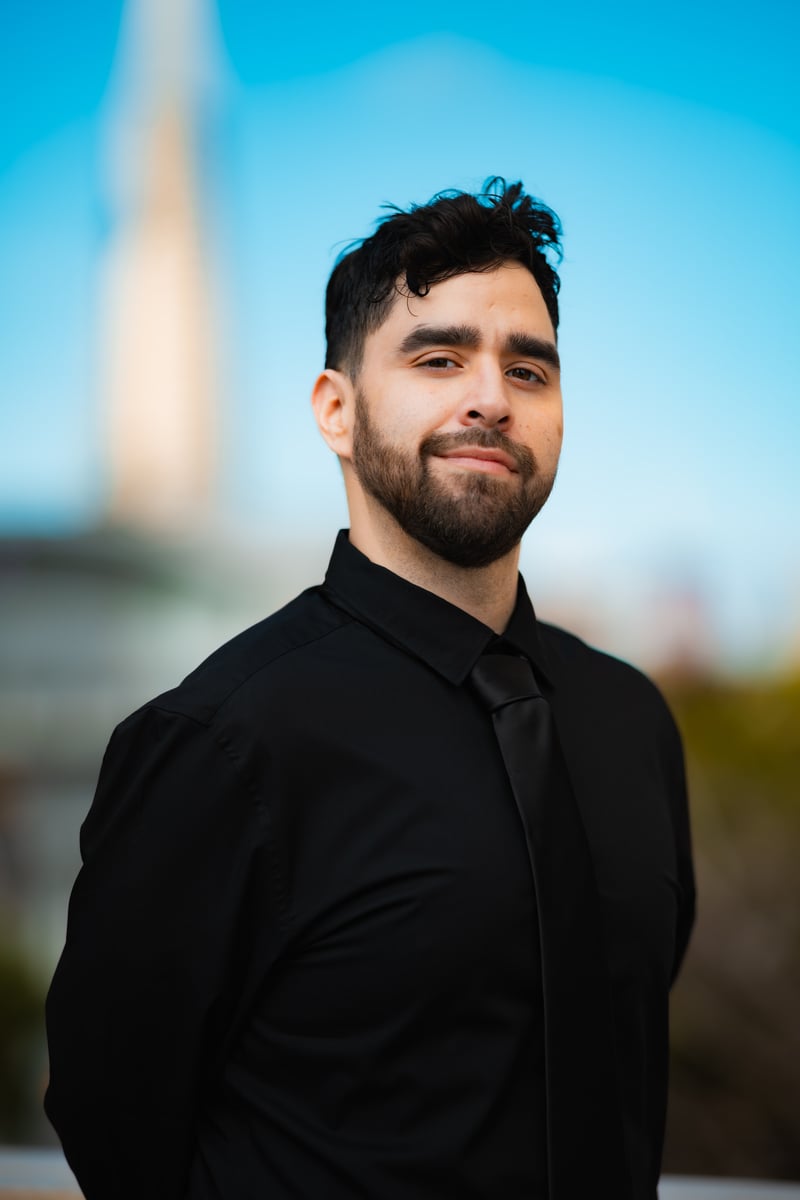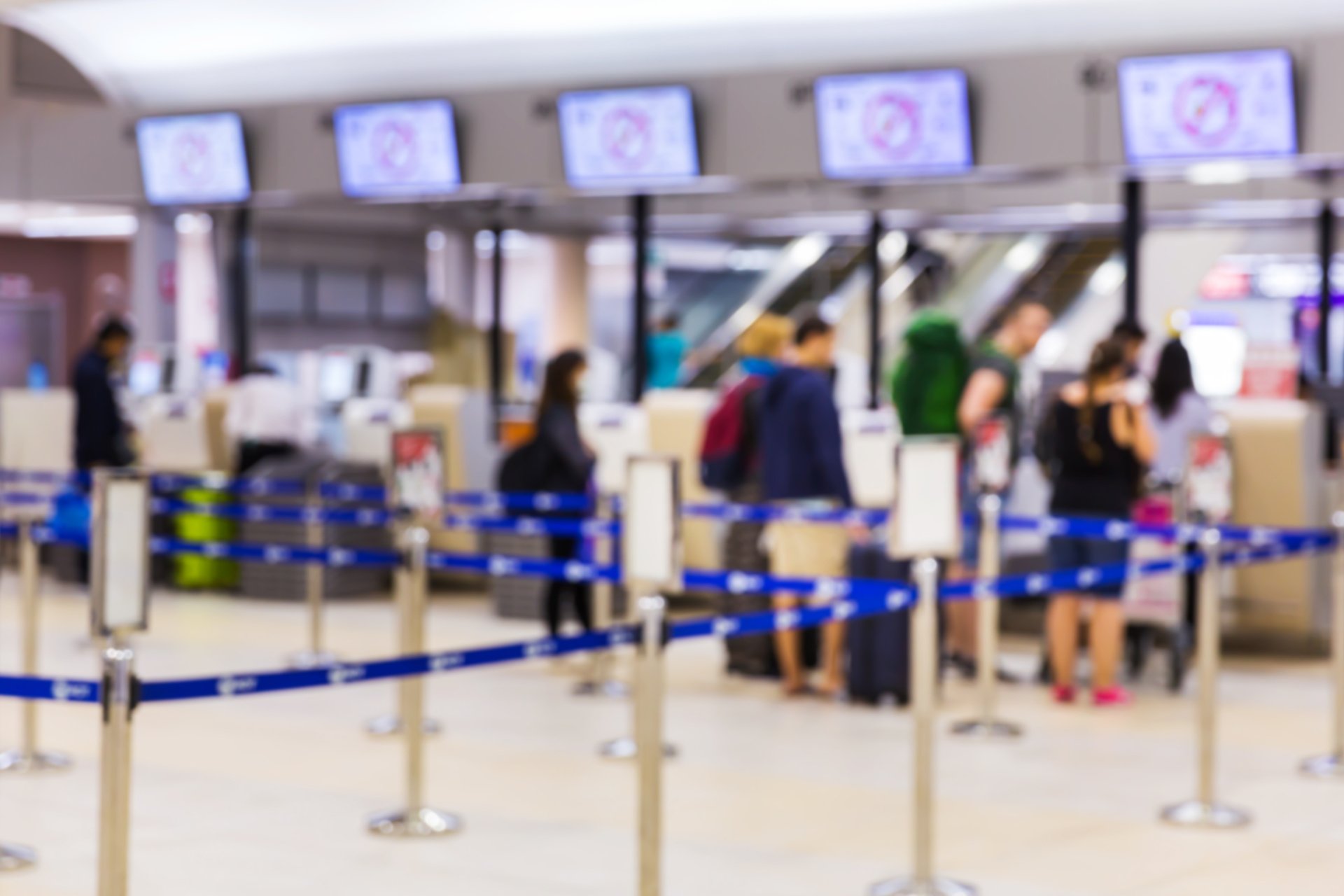
Mayor-elect Daniel Lurie at a 2019 press conference for his homeless shelter community Tipping Point. Creative Commons (cropped, centered).
Mayor-elect Daniel Lurie wants you back in the office, five days a week.
That’s how Lurie wants to revitalize our shuttered Financial District. In an interview with CNBC’s Kate Rogers, Lurie expressed desire to implement a return-to-office mandate, or RTO, for office workers. His vision is simple: make downtown SF like it was. But can he turn back the clock?
“We want people back in the offices,” he told Rogers. “Room 200, which is my office in City Hall, we’re all going back five days a week. I’ve started talking with department heads about it. These are ongoing conversations, but we’re going to role-model from the top of my administration. I will be in the office five days a week, I hope others will join me.”
Rogers rounded on the 47-year-old, asking, “What if they don’t?”
“Uh,” stammered Lurie, “we’re go—uh, have those conversations. Uh, my department heads, my administration, will be back in five days a week.”
Lurie’s logic? If Mark Benioff’s employees must return to the office, so do you.
Make Downtown Great Again?
“It starts with public safety. We have to make sure people and businesses feel safe sending their workers back downtown.”
Logically, that makes sense. A lot of what Daniel Lurie says in this interview adheres to a sort of if-then-will logic that feels regurgitated.
“We have to make it inviting again,” he continued. “We have to make it safe and clean and that’s on my administration.” Lurie then announced he is cold-calling CEOs across the country, inviting them to “come back to San Francisco.”
When asked what should happen in order to revitalize downtown, Lurie advocated for a stronger police presence.
“We need a fully staffed police department, sheriff’s department and 911 dispatch office,” he told Kate Rogers.
His politically moderate sway between left- and right-wing ideals becomes most evident in how Lurie words his response.
“We need to make sure we get our behavioral health crisis under control, which means we need to build more mental health and drug treatment beds. We have to get people off the streets, and we have to do that compassionately,” Lurie emphasized, running political bases. What began as a pro-cop endorsement flips on its belly and shoves the word compassion in our mouths. You’re compassionate, aren’t you? But then Lurie flips right back.
“We also have to send a message,” he said, “and we are, to the country and the world, that San Francisco is no longer a place to do [or] deal drugs or sleep on our streets.”
Who will our new mayor be good to?
A Malcom S. Forbes quote often misattributed to Samuel Johnson goes, “You can easily judge the character of a man by how he treats those who can do nothing for him.”
The city’s mayor-elect is starting with an ostensibly helping hand. Lurie’s Home Run plan to end homelessness in San Francisco begins with 1,500 short-term shelter beds. He wants them built within his first six months in office. Meanwhile the Department of Homelessness and Supportive Housing, or HSH, is limiting shelter stays to 90 days.
Lurie is also calling for the construction of “2,500 units of interim bridge housing” in his first two years. If all goes to plan, a homeless family would need to wait only 1.75 years—21 months or so—between the end of their shelter stay and when interim housing becomes available.
Unhoused people will get three options once their tents are potentially outlawed in SF. The first option: a shelter bed. 1,500 beds is a meager start for a city whose homelessness figures rose 7% in 2024. Over 8,000 people are living in shelters or on the streets in San Francisco. Next, a bus ticket “home,” a mere continuation of London Breed’s Journey Home, itself an extension of Gavin Newsom’s Greyhound program, Homeward Bound. Lastly, if a houseless person refuses the first options, they can enter mental health and/or drug treatment.
“There will be no more offers of being able to stay on the street,” Lurie assured Rogers. “Tents will not be allowed on our streets. We have state laws now that allow us to mandate treatment. We have to build beds, get people off the streets and into treatment. That’s compassionate. But once again, let me be crystal-clear: there will no longer be the availability to stay on our streets.”

The post Lurie’s To-Do List Off To Disappointing Start appeared first on Broke-Ass Stuart's Website.









